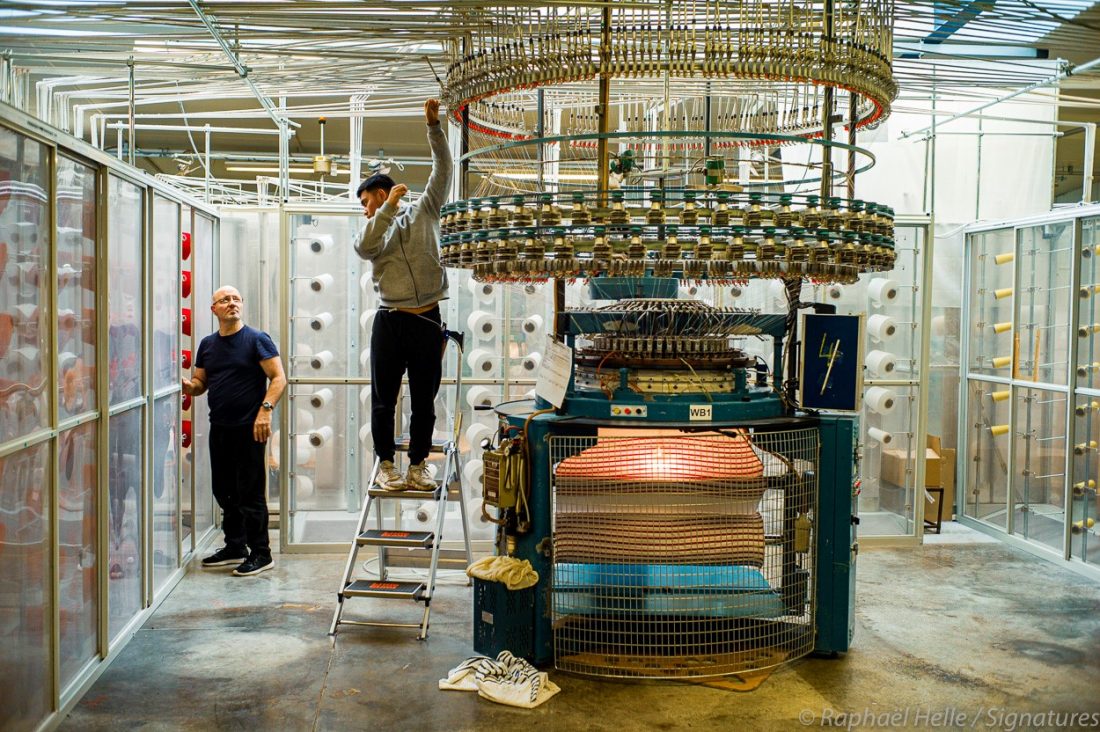Digital transition, the driving force of innovation
If innovation shifted standard… the world would be transformed. What if innovation didn’t just allow one company to stand out, but brought together an entire profession around a single cause: saving the planet? An ideal that seems far removed from the search for performance in a world that always wants more. A mere utopia, then? Not for sure!
Joining forces to better move forward
Smart fibers, connected textiles and functional fabrics have transformed the clothing market. True enough. But innovation, the kind that revolutionizes habits and improves processes, is still a long way off. “Since the creation of synthetic fibers, the world of textiles hasn’t really moved.Yes, the very notion of innovation has changed. We are revisiting technologies that exist or have existed in the past, and adapting them either to industrial criteria or to new concepts of comfort. It’s urgent to innovate!”, alerts Bruno Nahan, CEO of Bugis and Chairman of the Fédération de la maille, de la lingerie et du balnéaire. Unless you were born for and from innovation, and proclaim it loud and clear, even in your name – like the Italian company Innova Fabrics – the pointer is moving. Still, how far can – or should – it be moved?
German lace-maker Chanty clearly has the best answer today. Taking hold of companies who are looking to digitize their collections in its wake, Chanty is taking a giant step towards zero waste. Last January, Chanty revolutionized the traditional presentation of its collections in robrack, unveiling the very first e-collection after months of research and fine-tuning. “When you realize that out of 100 designs presented, a maximum of 20 or 30 will be sold. 70% of our collections go to waste. For each design we create, we have to produce 2,000 meters of fabric for the robracks.
The calculation is simple: 10 designs equal 20,000 meters of lace. You can imagine how much material and energy is wasted. Just to show designs,” insists Zoya Rutskaya Sebek, Transformation Manager at Chanty. On average, no more than 3 of the 20 or so designs selected by a lingerie or corsetry customer enter the collection. The digitization of collections only makes sense if the entire profession, from material and accessory producers to garment makers, embraces digitization. And limit physical production to samples and selected models. The result: zero-waste collections and precious time savings, with production reduced to one or two weeks.

Is digital just a communication tool?
To set up her new “digital” department, 3D LAB CHANTY, Zoya Rutskaya Sebek recruited five specialists in video games, graphic design and leather goods. “In two years, we’ve built up real expertise. Now we need to educate and bring all these professions together, which have ideas but are too all over the place. It’s a real job to adapt marketing, sales, and of course creation and design to develop 3D and make the transition to all-digital”, continues Zoya. With the total digitization of collections, certain professions will disappear, but others will develop. We’ll have to learn a new way of working.
But that’s the price we have to pay for a commitment to true eco-responsibility. Several material producers, mostly embroiderers, have gone for it. For others, discussions are ongoing because there’s one thing that even the sharpest geeks struggle with: touch. No three-dimensional model can reproduce the softness or comfort of a material. Crucial in lingerie more than anywhere else. “Digital is a funnel that allows us to direct our search. For the moment, it can only be a communication tool that can be used to prospect for new customers. Forasmuch as we do not succeed in analyzing materials and clearly understanding the touch and fall of the garment, the success of digitalization will remain limited,” contends Bruno Nahan, who doesn’t foresee any fundamental breakthrough in the clothing textile sector. He prefers to bring forward alternative proposals, responses to the climate emergency and the necessary change in our consumption habits: “If innovation focuses on these initiatives around recycled, biosourced and recyclable materials, then it has to be said that innovation is contradictory. It responds to a clear consumer demand for products that are less predatory on nature and less harmful to the environment, in a market – and this is the paradox – that has never been so vacillating, with entry-level volumes invading the market”.
Why is it that Generation Z, which is so committed to the environment, is the main over-consumer of a brand it should consider an environmental fallacy?, asks a well-known French news weekly about Chinese giant Shein. Ending with a generation that’s just embarrassed, but has no real excuse.


